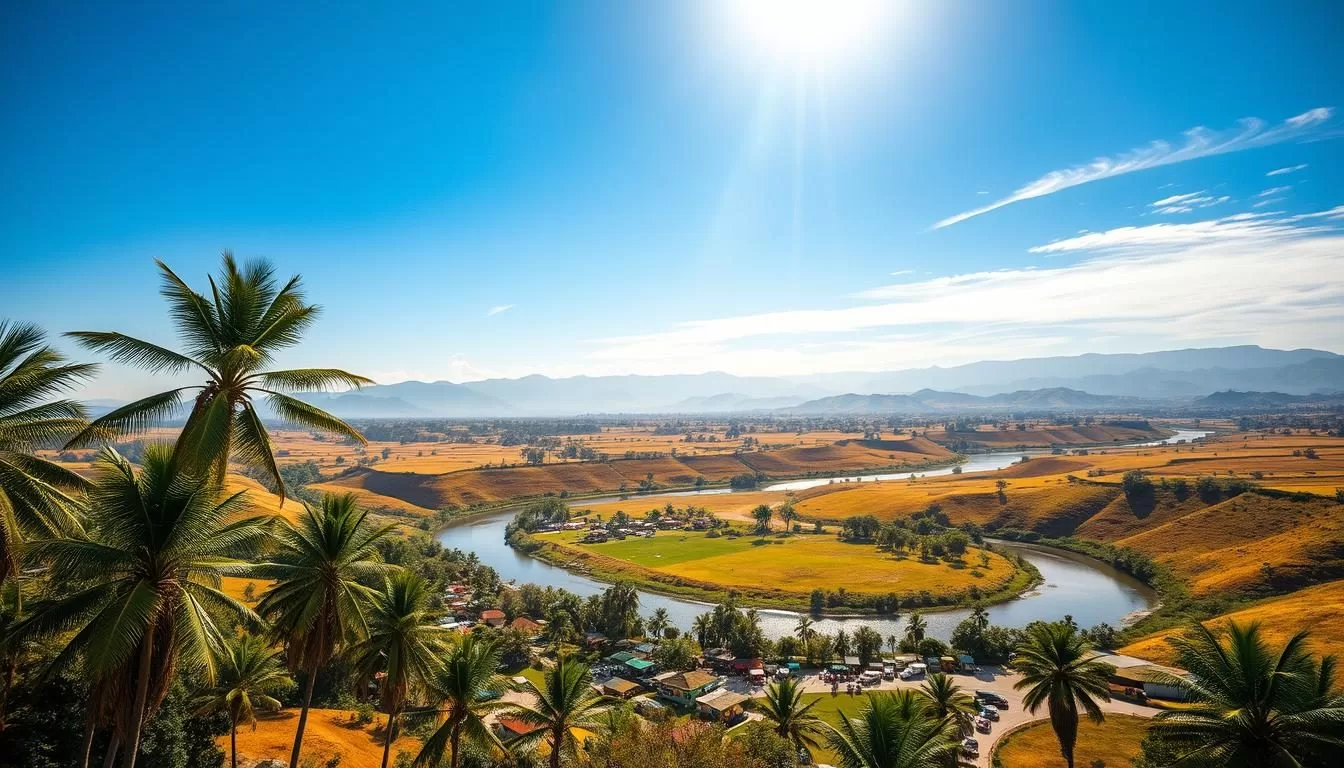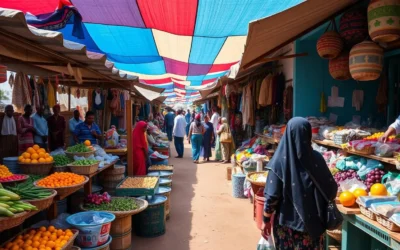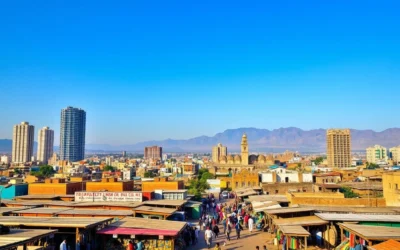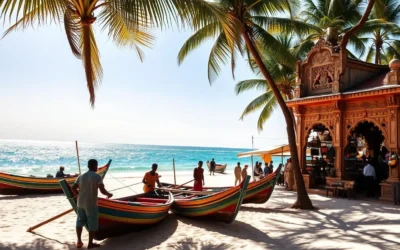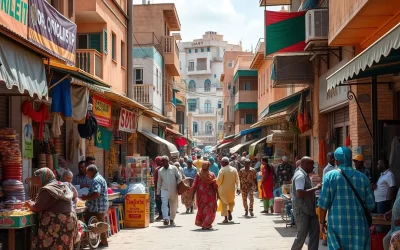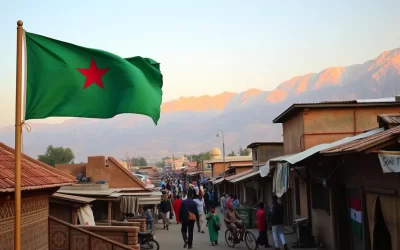✓ Accommodations✓ Flights✓ Rental Cars✓ Tours & Activities
Planning a trip to Somalia requires careful consideration of its unique climate. Located in the Horn of Africa, Somalia has a hot, dry climate with unreliable rain, making it essential to understand the weather patterns to ensure a enjoyable experience.
The country’s climate varies significantly throughout the year and across different regions. Understanding these patterns is crucial for planning activities and packing appropriately. This guide will help you identify the optimal time to visit based on your travel preferences and tolerance for heat.
By exploring Somalia’s climate zones and seasonal variations, you’ll be able to maximize your travel experience. Our comprehensive guide provides practical advice for weather-savvy travelers, ensuring you make the most of your trip.
Understanding Somalia’s Climate
Somalia’s climate is shaped by its unique geography and location in the Horn of Africa. This unique position influences the country’s climate conditions, making it hot and arid throughout the year.
Somalia’s Unique Geographic Position
Somalia’s geography ranges from coastal plains to plateaus and mountains, creating distinct climate zones. Its location near the equator means that seasonal variations are primarily defined by rainfall patterns rather than temperature changes. The country’s climate is influenced by the Intertropical Convergence Zone, resulting in two distinct rainy seasons annually.

Year-Round Climate Overview
The climate in Somalia is generally hot and arid, with scarce rainfall typical of a desert or semi-desert climate. The northern coast is particularly dry, with annual rainfall as low as 50 mm. In contrast, the northwest and southwest regions receive more rainfall, exceeding 500 mm per year due to their higher altitudes.
| Region | Annual Rainfall | Climate Characteristics |
|---|---|---|
| Northern Coast | 50 mm | Very dry, desert climate |
| Northwest (Hargeisa) | 500 mm | Relatively wet due to altitude |
| Southwest (Baidoa) | >500 mm | Hilly interior with significant rainfall |
Seasonal Weather Patterns in Somalia
Understanding Somalia’s seasonal weather patterns is crucial for planning a successful trip. The country’s climate is characterized by four distinct seasons, each with its unique weather characteristics.
The Gu Rainy Season
During the Gu rainy season, from March to May, Somalia experiences its heaviest rainfall, with April typically being the wettest month. You’ll encounter short but intense rain showers, often followed by sunshine, transforming the landscape into lush greenery. This season is crucial for replenishing water sources and revitalizing the landscape.
The Hagaa Dry Season
The Hagaa dry season, spanning from June to September, brings hot and dry conditions across most of Somalia. Coastal areas benefit from cooling ocean breezes, making the heat more bearable. Although summer months bring higher temperatures, especially inland, the dry conditions make it ideal for certain types of travel.
The Dayr Rainy Season
The Dayr rainy season, from October to December, is typically less intense than the Gu season, with shorter and more sporadic rainfall patterns. November often experiences moderate rainfall, refreshing the landscape without the flooding risks associated with the Gu season. Understanding these seasonal patterns is essential for planning activities and ensuring accessibility to certain regions.
- The Gu rainy season brings significant rainfall to most parts of Somalia.
- The Hagaa dry season offers hot and dry conditions ideal for certain travel activities.
- The Dayr rainy season refreshes the landscape with moderate rainfall.
By understanding these seasonal weather patterns, you can better plan your trip to Somalia, making the most of your travel experience.
Regional Weather Variations Across Somalia
As you travel across Somalia, you’ll notice distinct regional weather variations. Somalia’s diverse geography creates significant differences in climate across the country, making it essential to understand these variations when planning your trip.
Northern Coast Climate
The north coast, including areas like Berbera and Bosaso, experiences extremely hot temperatures from April to September. This region is also characterized by minimal rainfall throughout the year, with annual totals dropping to around 50 millimeters.
Southern Coastal Areas
In contrast, southern coastal areas around Mogadishu and Kismayo benefit from cooling ocean breezes that moderate temperatures. The southern coast has a longer first rainy season that can extend into July, creating different optimal travel windows.
Inland and Highland Regions
Inland and highland regions, particularly around Hargeisa, enjoy more moderate temperatures due to higher elevations. The northwestern highlands receive significantly more rainfall, with annual precipitation reaching up to 500mm.
Understanding these regional weather differences allows you to plan a trip that takes advantage of optimal weather conditions in each destination you wish to visit. The best time to visit Somalia depends greatly on which specific regions you plan to include in your itinerary.

Best Months for a Weather-Savvy Trip to Somalia
Somalia’s diverse climate means that the best months to visit vary based on your preferences and activities. Understanding the seasonal weather patterns can help you plan a more enjoyable and comfortable trip.
January-February: Ideal Exploration Weather
January and February are considered ideal months for exploring Somalia due to the dry and mild temperatures. During this period, you can comfortably visit the country’s natural attractions and cultural sites without the hindrance of rain. The pleasant daytime temperatures, ranging between 75-85°F (24-29°C), make outdoor activities and sightseeing more enjoyable.
November-December: Balancing Rain and Sunshine
November and December offer a unique blend of occasional rainfall and plenty of sunshine, creating dramatic landscapes. The Dayr rainy season during these months is typically less intense than the Gu rains, allowing for flexible travel plans. This balance makes it an attractive time for photographers and those who enjoy lush, green landscapes.
July-August: For Heat-Tolerant Travelers
For travelers who can tolerate higher temperatures, July and August provide virtually guaranteed dry weather. These summer months are ideal for coastal activities and offer fewer visitors at major sites, potentially leading to lower accommodation rates. It’s an excellent time for those seeking a more secluded experience.
| Month | Weather Conditions | Ideal Activities |
|---|---|---|
| January-February | Dry and mild temperatures | Exploring natural attractions and cultural sites |
| November-December | Balance of rain and sunshine | Photography, enjoying lush landscapes |
| July-August | Hot and dry | Coastal activities, secluded travel experiences |
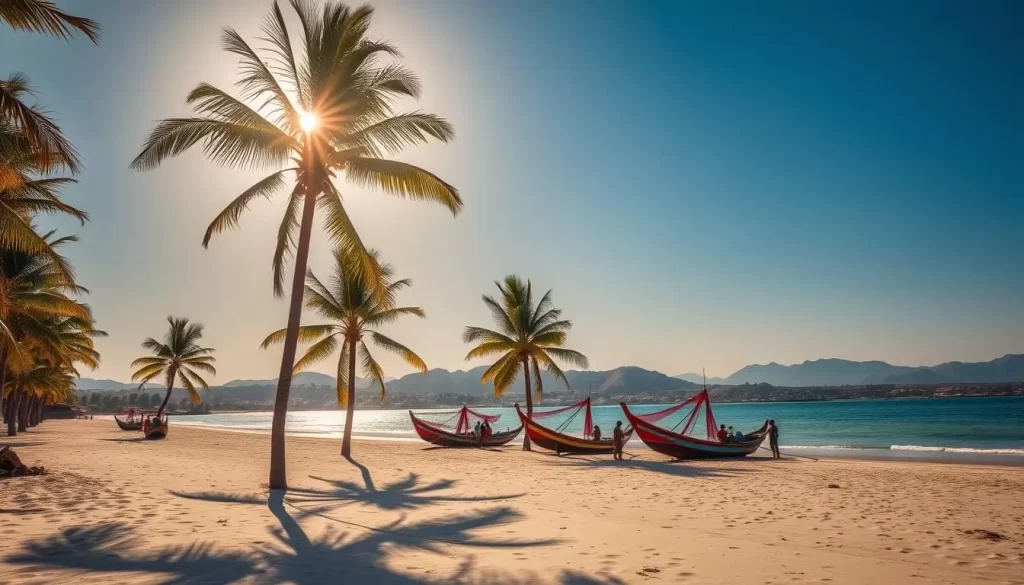
By choosing the right time to visit Somalia based on your preferences, you can maximize your comfort and minimize weather-related disruptions to your adventure. Whether you’re interested in cultural immersion, wildlife viewing, or simply enjoying the country’s diverse landscapes, there’s a best time for you to visit.
Weather-Based Travel Tips for Somalia
Somalia’s diverse climate requires careful planning to ensure a comfortable and enjoyable journey. Whether you’re exploring the northern coast or venturing into the inland regions, being prepared for the local weather conditions is essential.
Essential Packing for Somalia’s Climate
Packing the right clothing is vital for your comfort and safety. Lightweight, breathable clothing is recommended year-round, with long sleeves and pants providing protection from both sun and insects. During the rainy seasons, consider packing quick-drying fabrics and a lightweight waterproof jacket to be prepared for unexpected showers.
| Season | Recommended Clothing | Additional Tips |
|---|---|---|
| Rainy Season | Quick-drying fabrics, waterproof jacket | Stay hydrated, beware of flash floods |
| Dry Season | Sun protection (hats, sunscreen, sunglasses) | Protect yourself from heat-related illnesses |
Health Considerations in Different Seasons
Health considerations vary by season. During the dry months, heat-related illnesses are a primary concern. In contrast, the rainy seasons require precautions against mosquito-borne illnesses. Stay hydrated regardless of the season, and consider local advice on weather conditions.
Planning Activities Around Weather Patterns
Plan your daily activities around the weather. Schedule outdoor explorations for early mornings during hot months, and have indoor alternatives during rainy seasons. Be aware of the impact of weather on transportation, as some roads may become impassable during heavy rains.
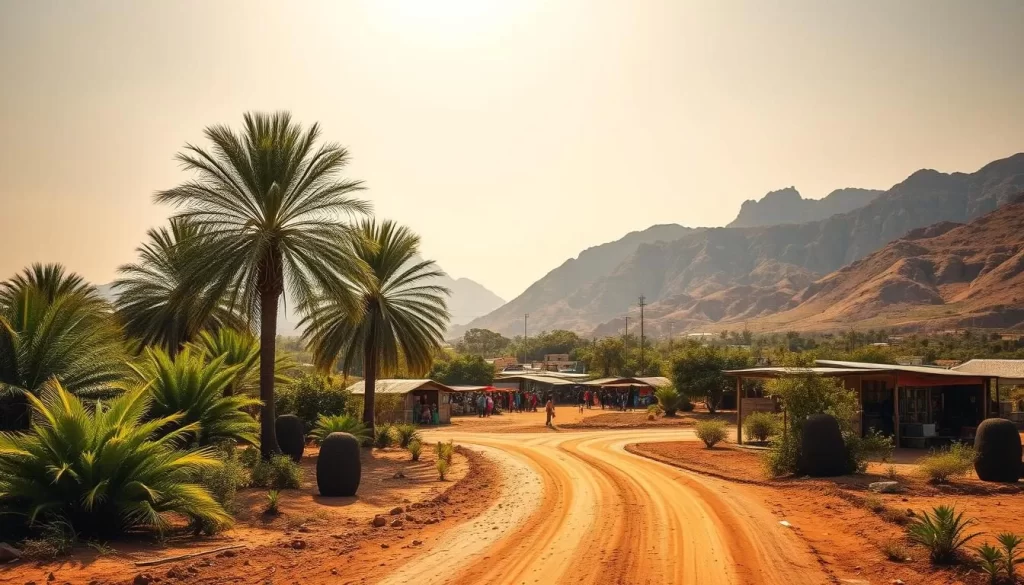
Conclusion
The best time to visit Somalia largely depends on your personal preferences and travel plans. With its diverse climate, you can enjoy unique experiences throughout the year. January-February and November-December offer balanced weather, while July-August provides dry conditions. Understanding Somalia’s seasonal patterns will help you plan a memorable trip.
The above is subject to change.
Check back often to TRAVEL.COM for the latest travel tips and deals.
